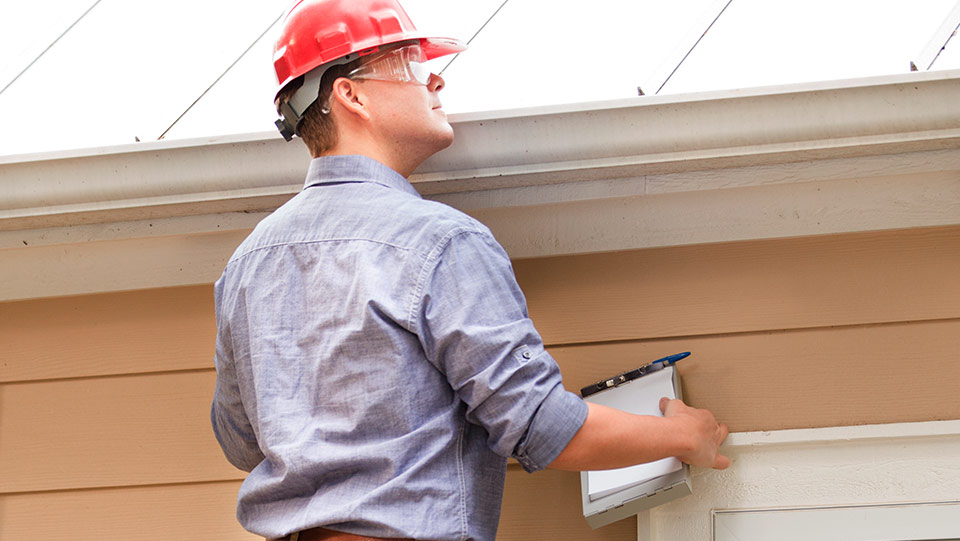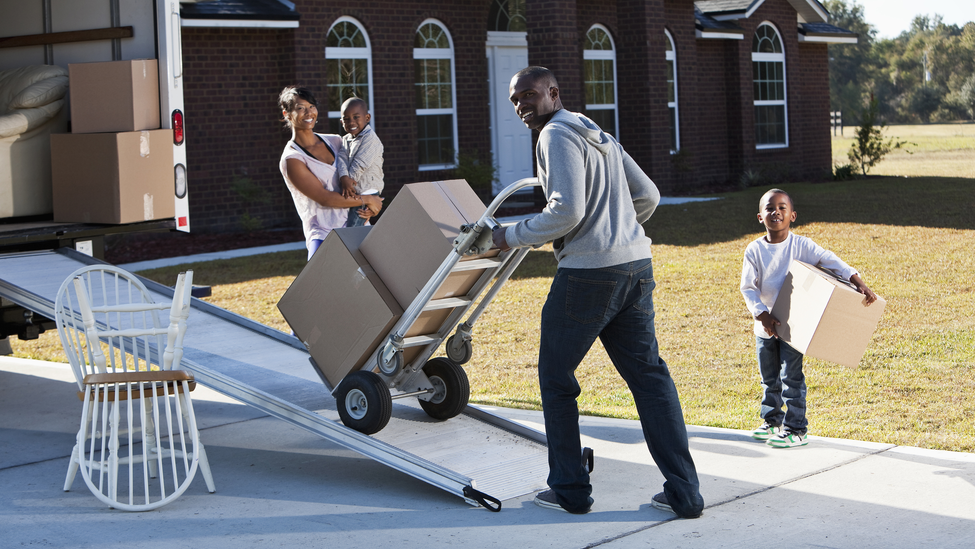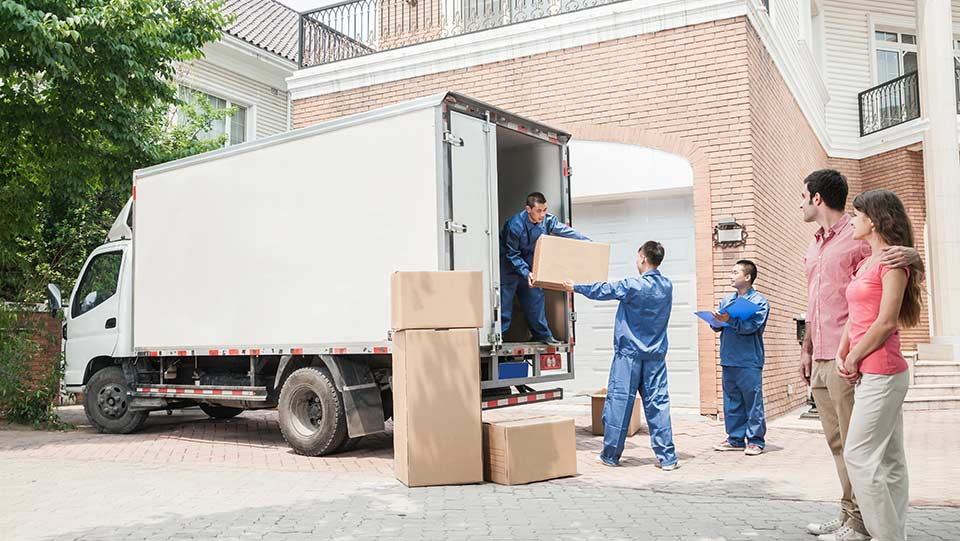Checklist for Moving into a New Home


Moving to a new address? First-time homeowner? Whether it’s the first time or the 10th, there are plenty of things to consider when you’re moving. With a little planning and the right help, you can make the process easier on yourself and everyone else involved.
Here’s a checklist of steps to take to help make sure your move is a successful one:
What to do after you buy a new house
Organizing your move-in ahead of time can help streamline the entire process and start you off on the right foot in your new home. Because the excitement leading up to your move can make it difficult to keep track of the essential tasks, this post-buying a house checklist can help.
1. Plan where everything will go
Before you move in, take advantage of the emptiness in your new house and plan where you want to put everything.
Measure all the rooms and create a blueprint of the spaces you have to work with. You can do this on paper or use free smartphone apps that can measure walls and enable you to build a custom blueprint right on your phone or tablet.
Measure the furniture you plan to bring with you.
Using your blueprint, create a floor plan for your new home, indicating where each piece of furniture will go and the direction it should face.
If your home has stairs or narrow hallways, measure ahead of time, before you start moving in, to ensure everything can fit through the openings.
If you can, before you move into your new home, share your plan with the movers and label your furniture with its new room location in advance. This will help save time and effort on moving day.
2. Renovate and update
If you’re planning to repaint walls or put up wallpaper, install carpet, put in new floors or make other renovations, do it before moving in. After purchasing your new home and before officially moving in, you’ll have room to do the work and you won’t have to worry about your furniture getting scratched or covered in paint. You may even be able to get estimates before you buy your house, as long as you do it with the permission of the previous homeowner.
3. Set up utilities
Before you move in, make sure the following utilities are turned on by move-in day and service is transferred to your name:
- Gas and/or electric
- Sewer
- Water
If you’re a new homeowner, other services you may want to arrange include:
- Cable
- Internet
- Security system providers
- Trash
Remember that some services (such as cable, internet and security services) require an installation appointment. Be sure to schedule these well in advance of your move.
4. Check the appliances
Regardless of whether you’re buying a brand-new home or an older home, be sure you test all the appliances during your walkthrough prior to closing or moving in. Make sure any recommended appliance repairs identified by an inspector have been completed before buying your new home.
- In the kitchen: Test the dishwasher and garbage disposal to ensure they work and that there are no leaks. Test the stove, oven, microwave and refrigerator.
- In the laundry room: Test that the washer and dryer work and that there are no leaks from the washer.
- In the garage/basement/exterior: Test the heater, water heater, air conditioner, water softener and humidifier.
5. Pack your “move-in kit”
If you’re a new homeowner, before you pack your belongings, separately pack the things you’ll need for the first few days in your new home. At a minimum, your “move-in kit” should include a few changes of clothes, towels and toiletries; grocery staples, paper plates and plastic utensils; cleaning supplies and garbage bags.
6. Make sure your possessions are insured for the move
Whether you’re new to owning a home or a seasoned homeowner, contact your Travelers homeowners insurance representative or local independent agent to understand what protection your policy provides to cover your possessions during the move. While many homeowners policies cover losses if your possessions are stolen from the moving truck, other protection may be limited while your possessions are in transit. Your insurance agent can help you determine if acquiring additional short-term coverage for your move is a good idea.
7. Get help unpacking
Unpacking can be a long and exhausting process if you’re doing it by yourself. After buying your new house, ask friends and family to help and take advantage of their special skills. If you have a friend who’s a tech whiz, ask them to set up your home entertainment center. Know someone who’s super organized? Ask them to work on your closet space. Not only can they speed up the process, they can help you find ways to use your new space that you might not have thought of yourself.
8. Locate your circuit breaker box and shutoff valve
While assessing and inspecting your new home, you may not have given much thought to how the plumbing and electrical systems work. Before you move in:
- Locate the circuit breaker box. Test each switch and make sure they are correctly labeled so that you know what they are connected to.
- Look for your water meters and the water shutoff valve. Locate your main water shutoff valve and make sure that you know how it works. If you ever have to deal with a major leak or a burst pipe, knowing how to turn off the water quickly can make a big difference in helping to limit the damage to your home and its contents.
9. Test your detectors
Before you move in, check that all the smoke detectors are in good working order and replace any dead batteries. Consider stocking up on the batteries you need for future use. Also, make sure your home is equipped with carbon monoxide (CO) detectors or combination smoke/CO detectors. If you live in an area where radon gas is common, you may want to get your basement tested or invest in a radon remediation system.
10. Change your locks
You’ll get your house keys at the closing, but there’s no way of knowing who else might have a spare key. Getting your locks changed is an important safety measure for new homeowners. Also, if the doorknob, latch or lock seem unreliable or are not working properly, you should purchase new hardware or lock sets and deadbolt sets and have them installed by a professional prior to moving in.
If the lock sets seem secure, have a locksmith rekey the locks. This changes the locks so they operate with a new key.
11. Update your address with key contacts
After you buy a house and before you move, submit a change of address form to the post office. You’ll also want to update your address with companies you pay monthly, including banks, credit card companies, insurance companies and utilities. Be sure to update your address with your employer, the Social Security Administration and any other financial institutions. Finally, tell your friends and family. Consider making an announcement by sending a fun postcard or letter with your new address and a picture of your new home.
You officially own or rent a new home ... now protect it
Once you’ve moved into your new home, you’ll want to take steps to help keep it safe. Keeping your home well maintained and creating a fire safety plan can go a long way toward helping to make your house a safe and comfortable home for years to come.
Looking for more ways to maintain your home and help keep your home protected? Learn more about home insurance from Travelers.



